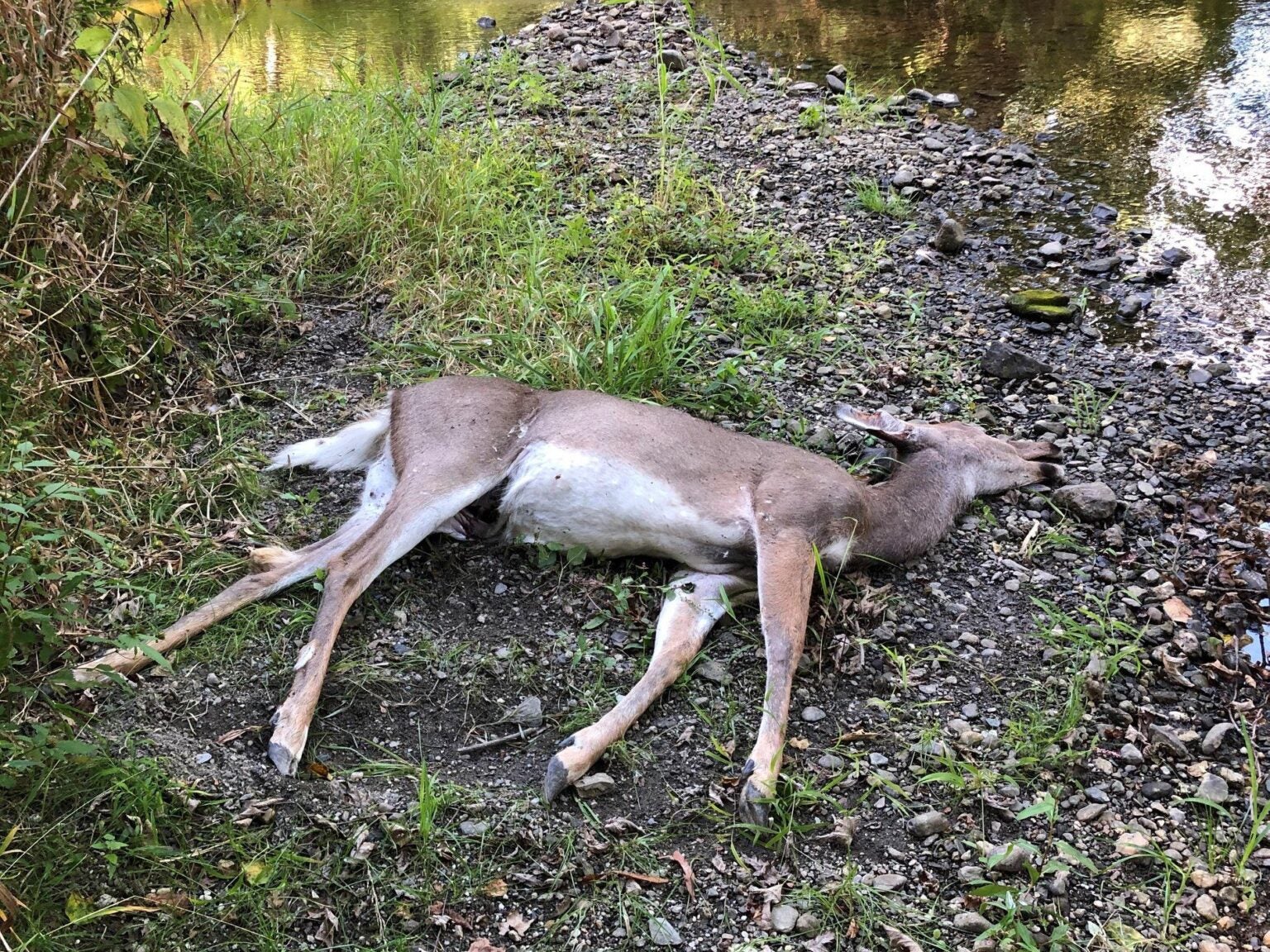Whoever had zombie deer on their 2021 disaster bingo is today’s big winner.
More than 700 Whitetail deer in several New York counties have been killed by epizootic hemorrhagic disease, a viral disease spread by midges. So far, the EHD outbreak has been confirmed in seven counties: Columbia, Dutchess, Greene, Nassau, Oswego, Suffolk, and Ulster. The New York Department of Environmental Conservation also investigating suspected EHD cases in at least nine more counties, which include Albany, Jefferson, Oneida, Orange, Putnam, Rensselaer, Rockland, Sullivan, and Westchester counties.
According to the NYSDEC, the disease is not communicable to humans, and does not spread between deer. The DEC website goes on:
In deer, external signs of EHD include fever; small hemorrhages or bruises in the mouth and nose; and swelling of the head, neck, tongue, and lips. A deer infected with EHD may appear lame or dehydrated. Once infected with EHD, deer will begin to show signs 2 – 10 days later and usually die within 36 hours of showing signs of infection. Frequently, infected deer will seek out water sources and carcasses are often found in or near water. Deer dead from EHD infection seem to bloat and decompose rapidly. A large number of dead or sick deer may be found in a limited area.
EHD resembles other serious but rare diseases of domestic ruminants including Blue Tongue and Foot and Mouth Disease, so it is important to confirm the diagnosis when outbreaks occur. Dead deer are examined by necropsy (animal autopsy) and tissues are tested for viral DNA to confirm the disease.
NYSDEC
Be warned though, EHD is not limited to New York. The virus is found all across the country. As you can see in the map below, the disease is found in nearly every state. And that map only shows data up to 2015, I could not find a complete map with more current data.

If you are in NY and come across a deer you suspect died of EHD, the DEC has a reporting page. If you are outside of NY, contact your local game warden, fish & wildlife officer or encon cop.
